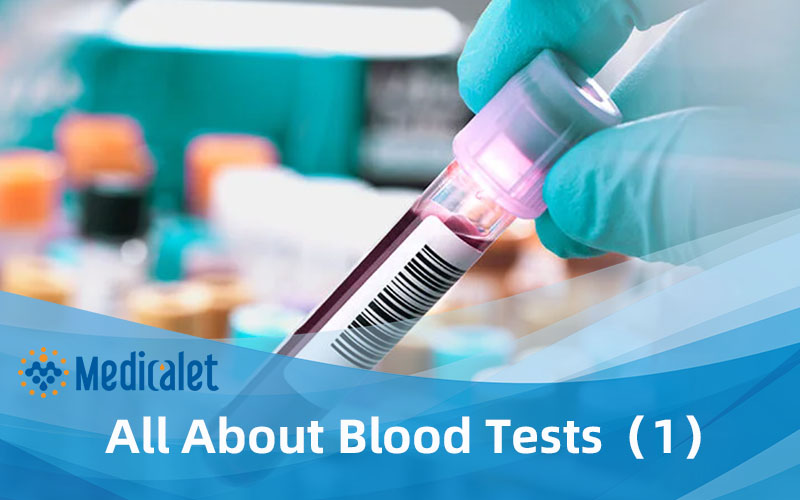
All About Blood Tests
Blood tests can be used to help a doctor identify a variety of health conditions, including vitamin deficiencies, organ failure, HIV, cancer, diabetes, and more.
What is a blood test?
Regular blood testing is one of the most important ways to keep track of your overall physical well-being. Getting tested at routine intervals can allow you to see the way your body changes over time and empower you to make informed decisions about your health.
What does a blood test show?
Some blood tests can help determine how different organs are working. Examples of organs whose malfunctions can be visible in a blood test includeTrusted Source your thyroid, liver, or kidneys.
We can also use blood tests to search for markers of diseases and health conditions such as:
diabetes
HIV
anemia
cancer
coronary heart disease
Even if a person does not have heart disease, a blood test can show whether they may be at risk of developing the condition.
10 important blood tests
1. Complete blood count
A routine complete blood count (CBC) checks for levels of 10 different components of every major cell in your blood: white blood cells, red blood cells, and platelets.
Important components this test measures include red blood cell count, hemoglobin, and hematocrit.
Here’s the typicalTrusted Source range of results, although every laboratory may have its own range that varies slightly:
Component Normal range
red blood cells (cells responsible for carrying oxygen throughout the body) male: 4.3–5.9 million/mm3; female: 3.5–5.5 million/mm3
white blood cells (immune system cells in the blood) 4,500–11,000/mm3
platelets (the substances that control the clotting of the blood) 150,000–400,000/mm3
hemoglobin (protein within the red blood cells that carries oxygen to organs and tissues, and carbon dioxide back to the lungs) male: 13.5–17.5 grams/deciliter (g/dL); female: 12.0–16.0 g/dL
hematocrit (percentage of blood made of red blood cells) male: 41–53%; female: 36–46%
Abnormal levels of these components may indicate:
nutritional deficiencies, such as vitamin B6 or B12
anemia (iron deficiency)
clotting problems
blood cancer
infection
immune system disorders
2. Basic metabolic panel
A basic metabolic panel (BMP) usually checks for levels of eight compounds in the blood:
calcium
glucose
sodium
potassium
bicarbonate
chloride
blood urea nitrogen (BUN)
creatinine
Abnormal results may indicate:
kidney disease
diabetes
hormone imbalances
3. Comprehensive metabolic panel
A comprehensive metabolic panel (CMP) includes all the measurements of a BMP as well as additional proteins and substances related to liver function, such as:
albumin
total protein
alkaline phosphatase (ALP), an enzyme mostly found in the bones and liver that’s involved in several bodily processes
alanine aminotransferase (ALT), an enzyme found in the liver
aspartate aminotransferase (AST), an enzyme found in the liver and other tissues within the body
bilirubin, which is waste resulting from the breakdown of red blood cells that the liver filters out
The same conclusions can be drawn from a CMP as from a BMP for the same substances that a BMP covers. Other abnormal levels can also indicate underlying conditions, such as:
High levels | Low levels | |
ALP | • bile duct blockage • cirrhosis • gallbladder inflammation • gallstones • hepatitis • Paget’s disease | • bone metabolism disorders • heart surgery • malnourishment • zinc deficiency |
ALT | • cirrhosis • hepatitis • liver cancer • liver damage | considered normal |
AST | • cirrhosis • heart conditions • hepatitis • mononucleosis • (mono)pancreatitis | considered normal |
bilirubin | • abnormal red blood cell destruction (hemolysis) • adverse medication reactions • bile duct blockage • Gilbert’s syndrome • hepatitis | not a concern |
4. Lipid panel
This test checks levels of two typesTrusted Source of cholesterol:
high-density lipoprotein (HDL), or “good” cholesterol
low-density lipoprotein (LDL), or “bad” cholesterol
HDL is “good” because it removes harmful substances from your blood and helps the liver break them down into waste. LDL is “bad” because it can cause plaque to develop in your arteries, increasing your risk of heart disease.
Here are the ranges Trusted Source for each type:
High | Low/Optimal | |
HDL | >60 mg/dL | male: <40 mg/dL; female: <50 mg/dL (low) |
LDL | >160 mg/dL | <100 mg/dL (optimal) |
